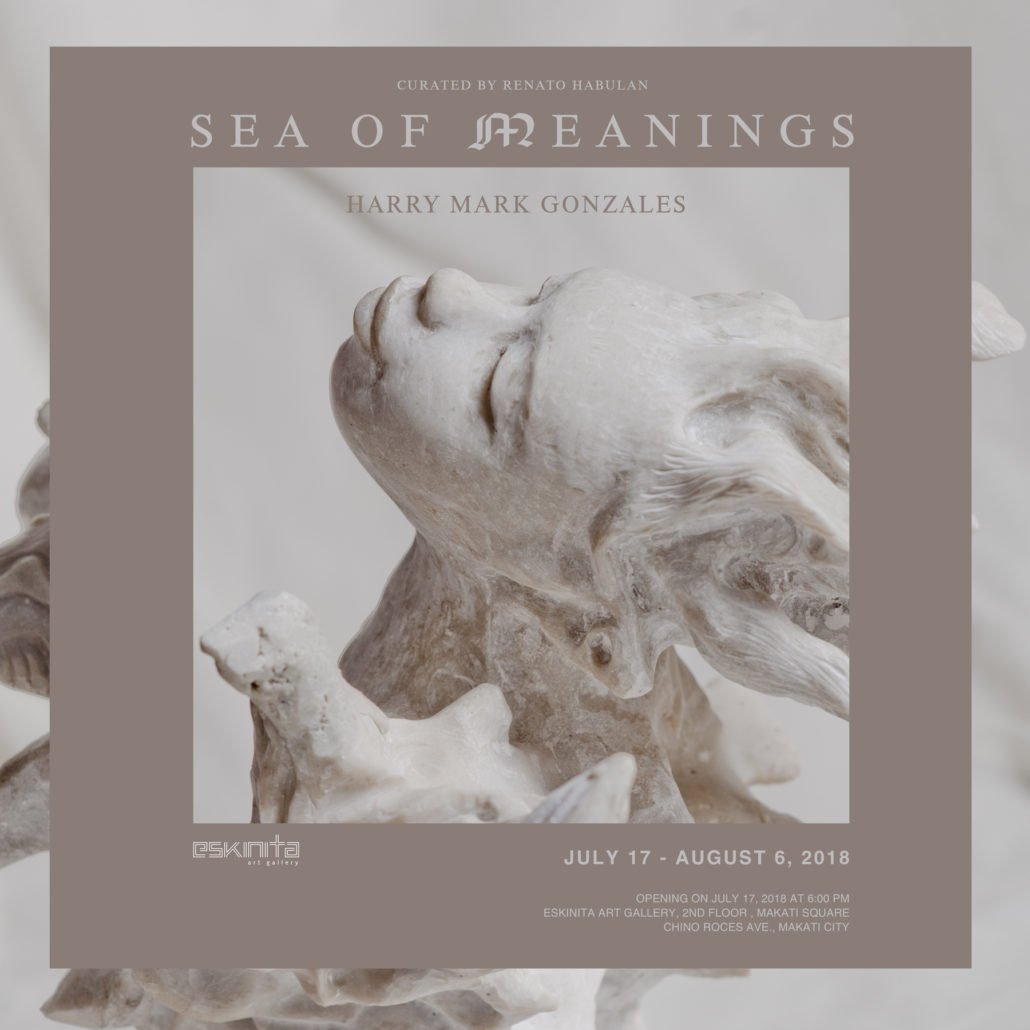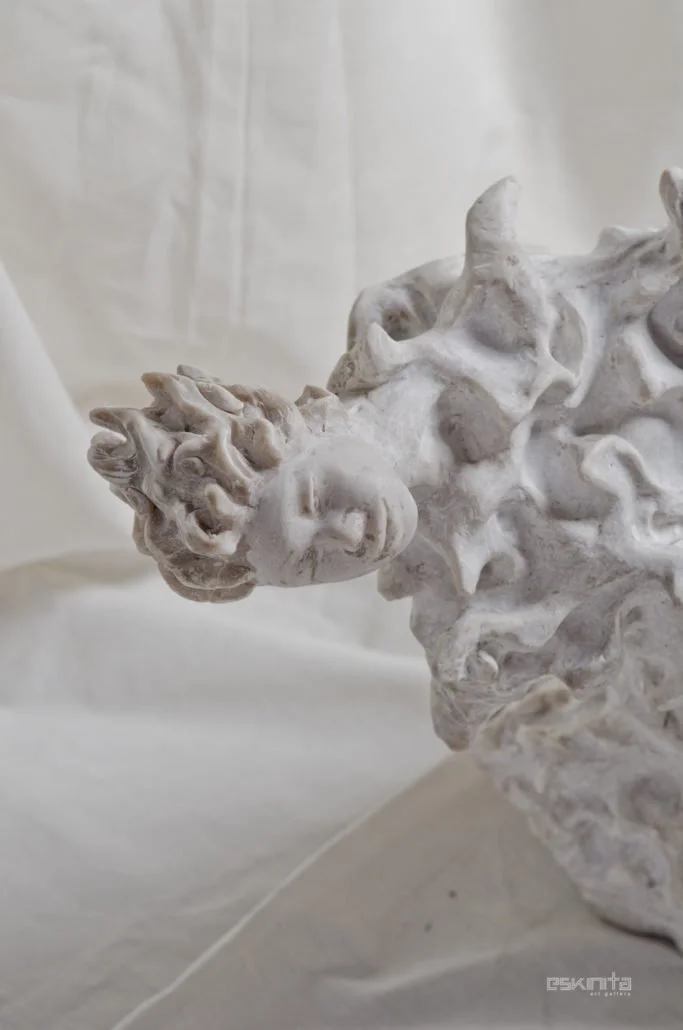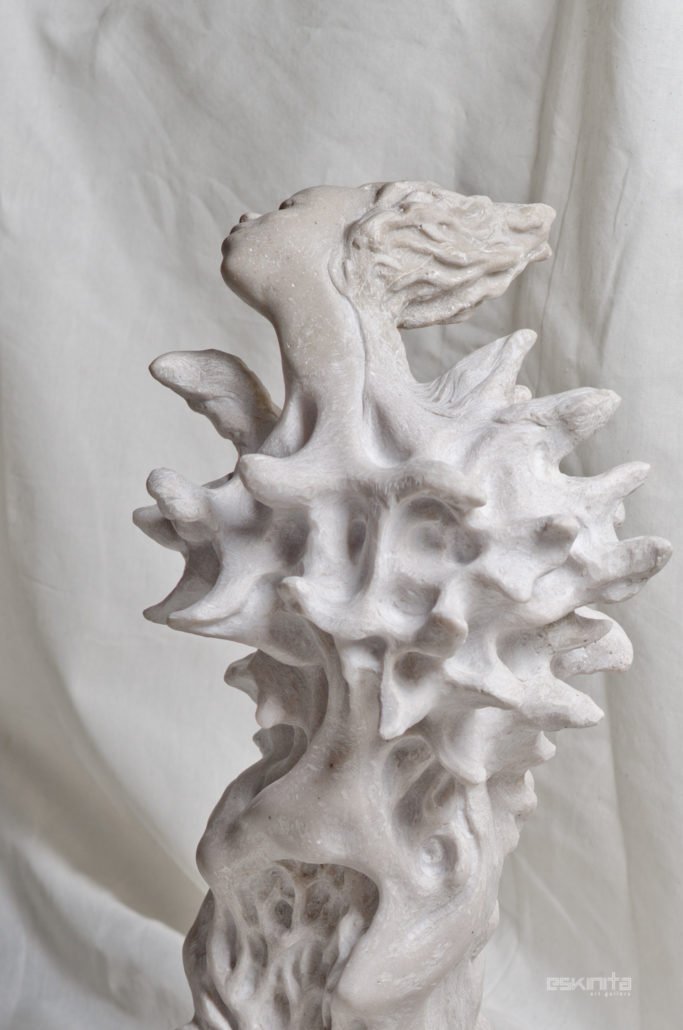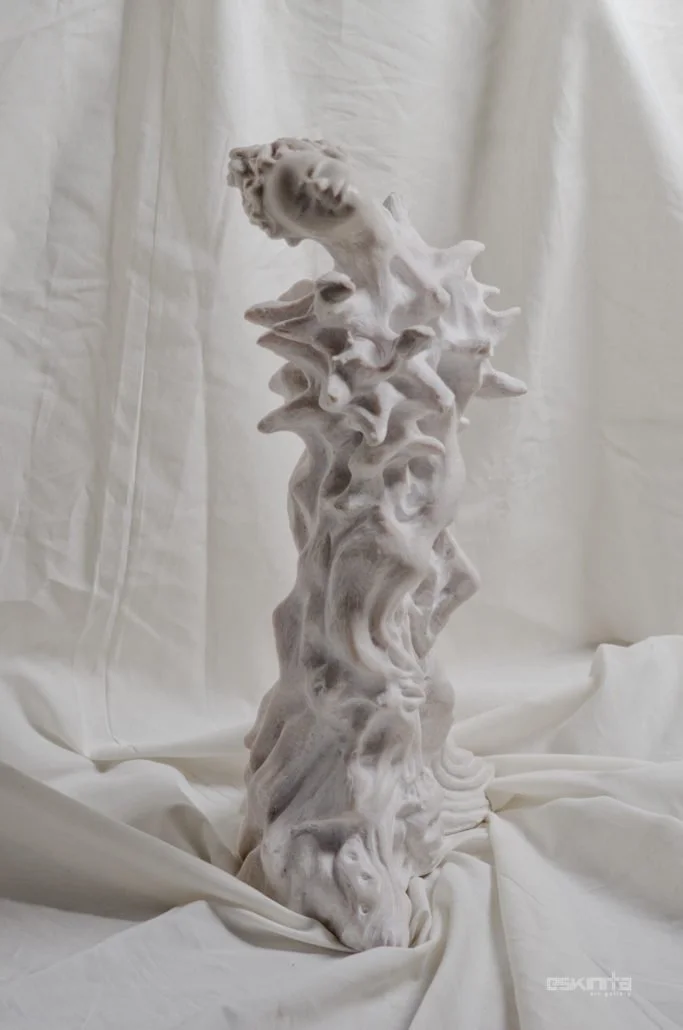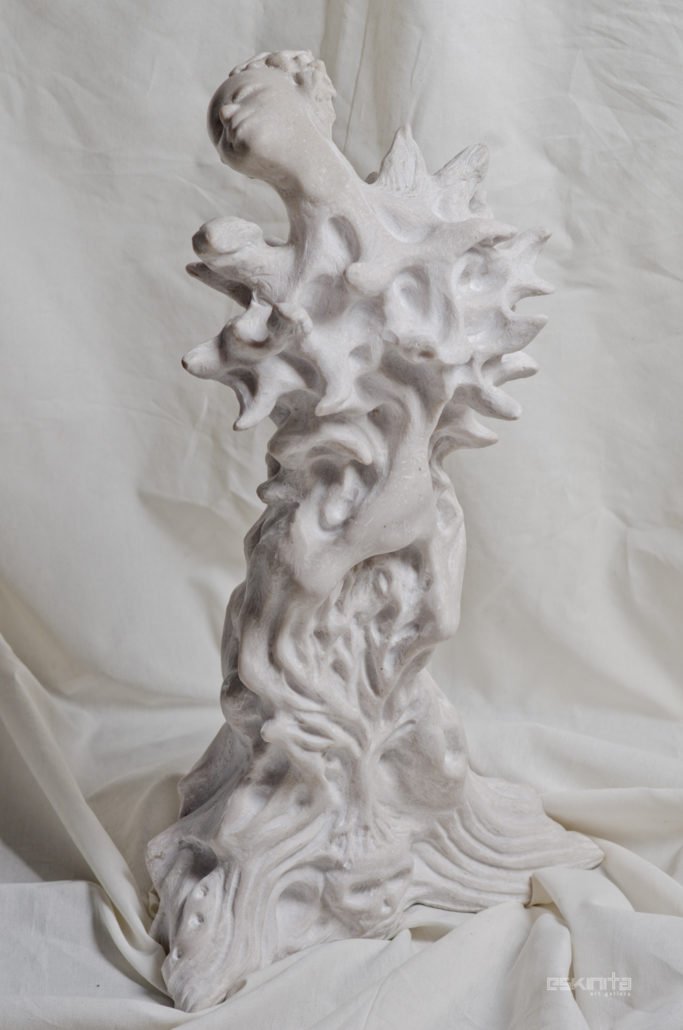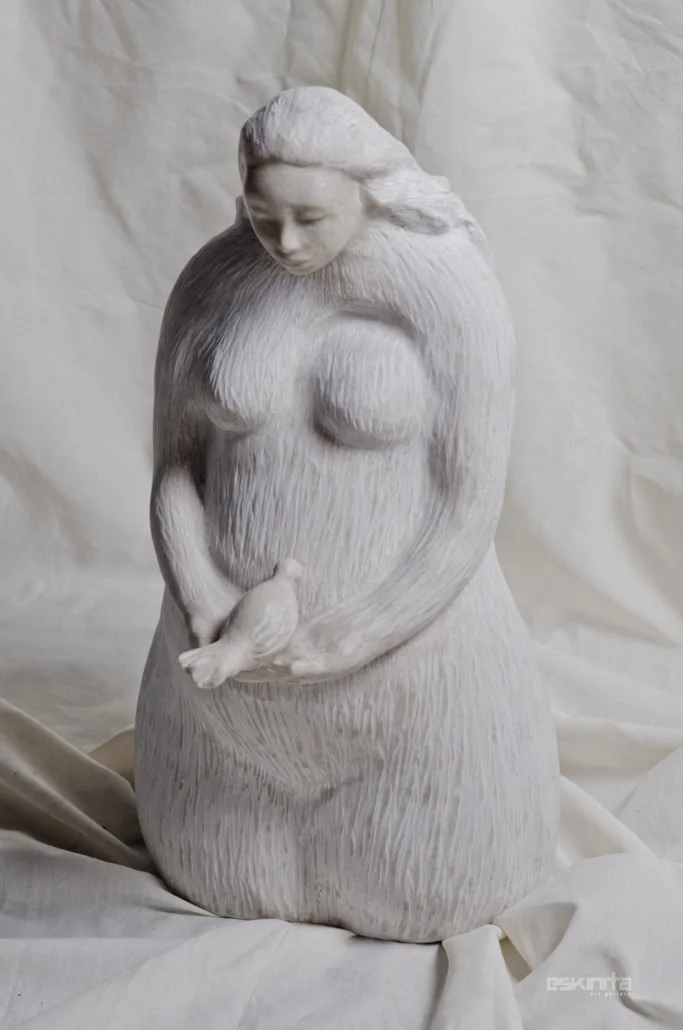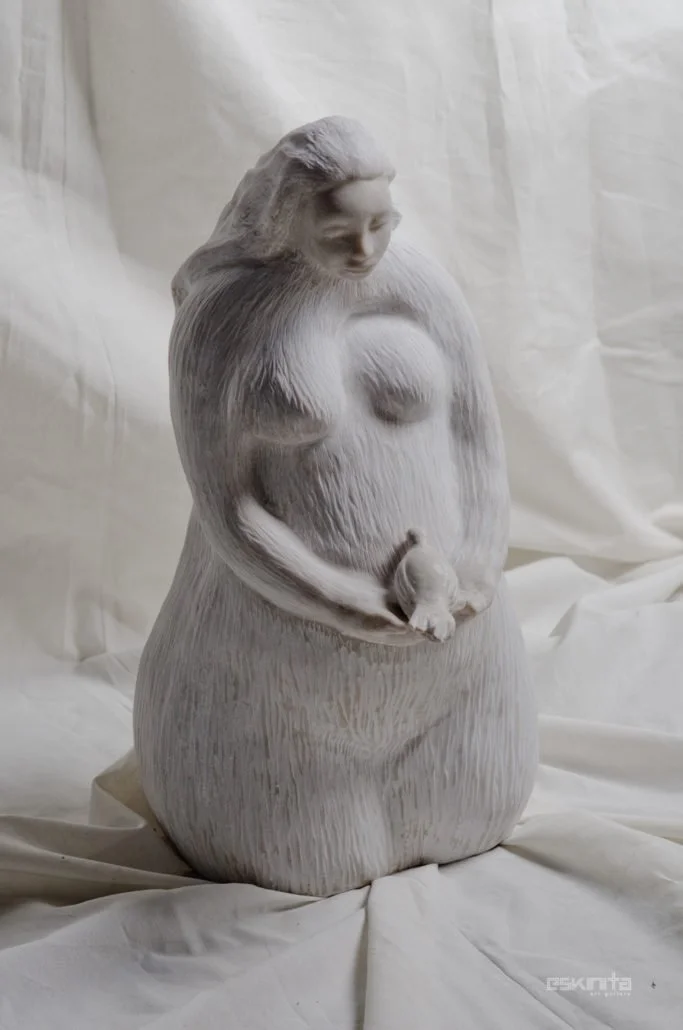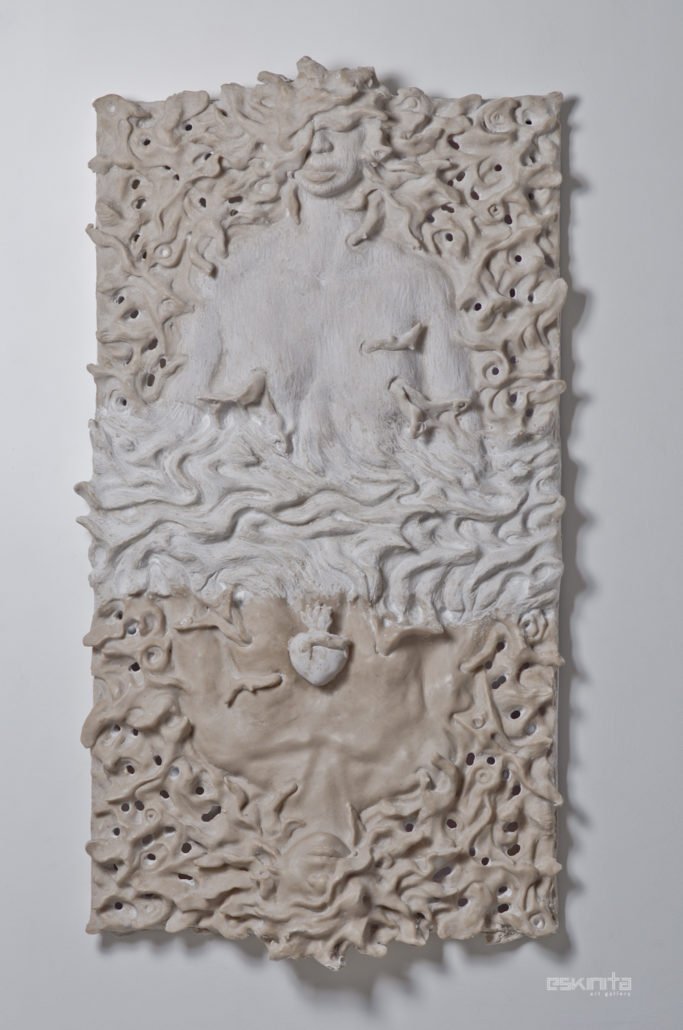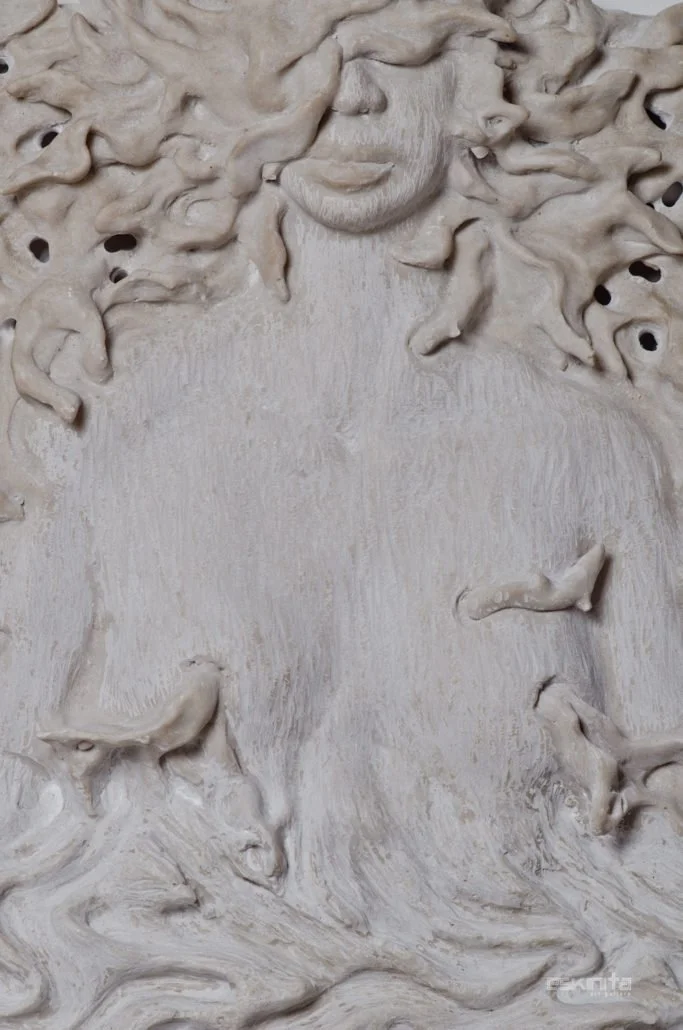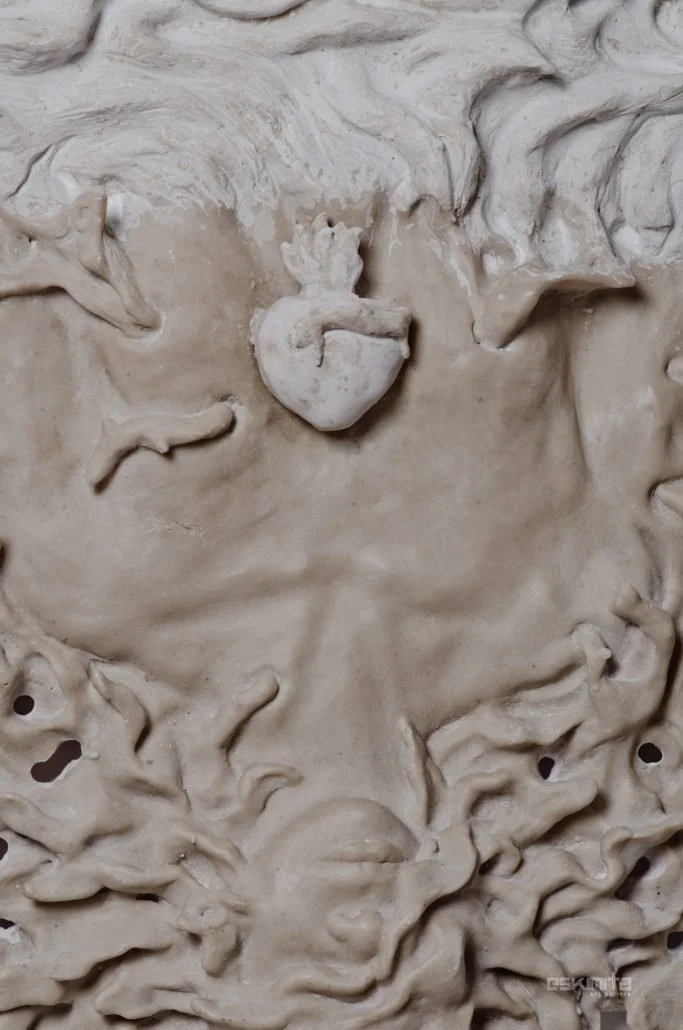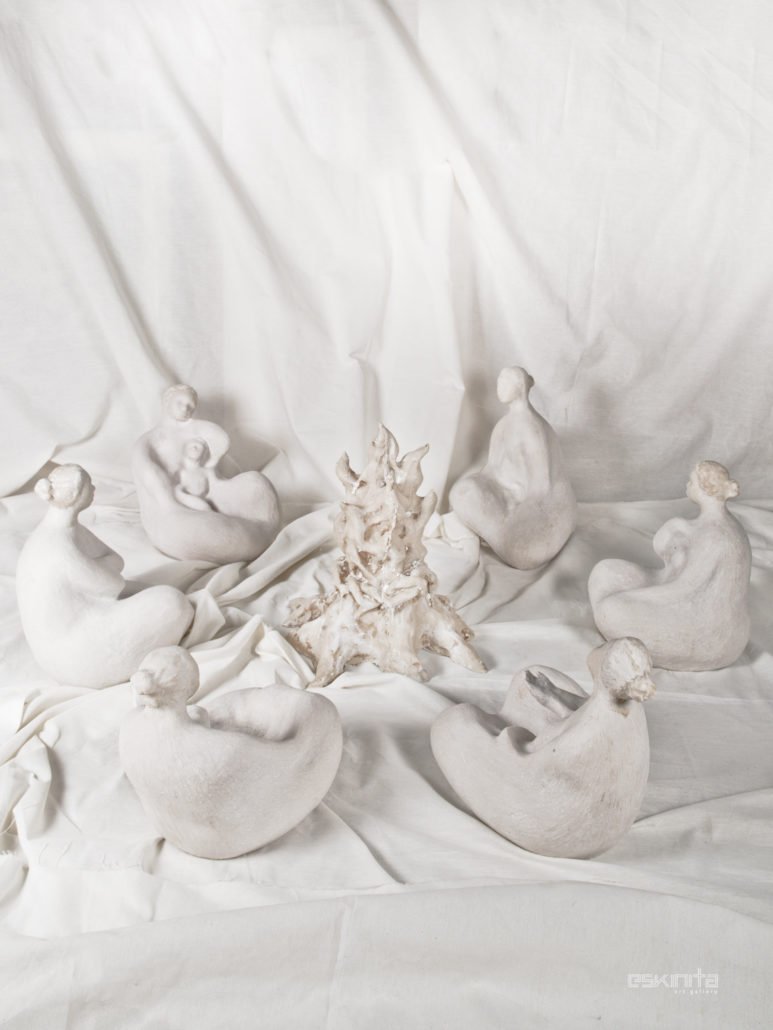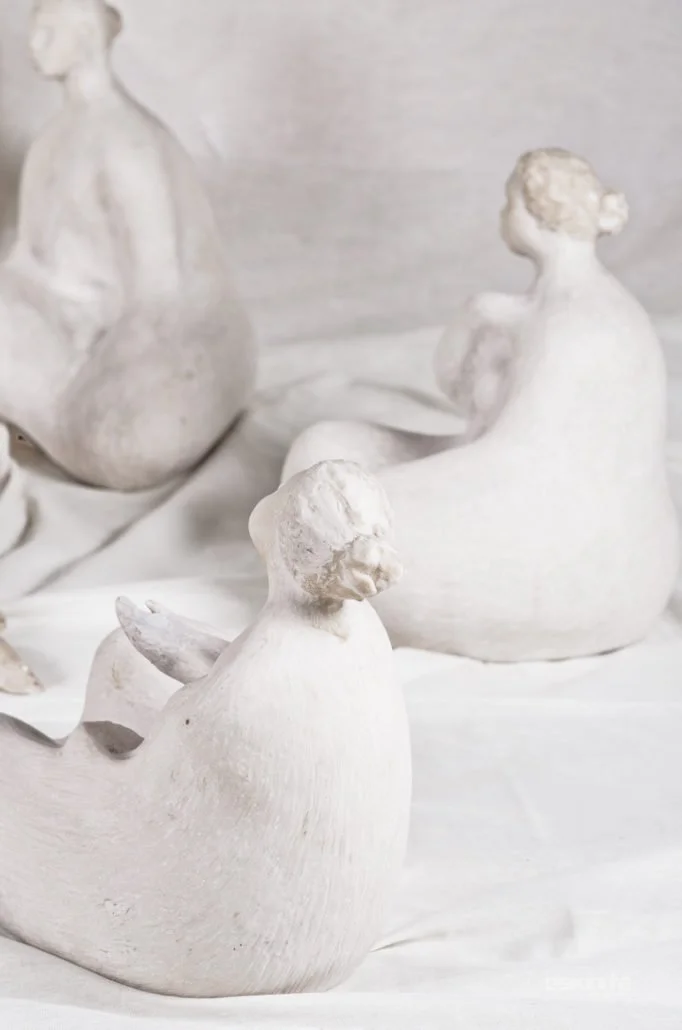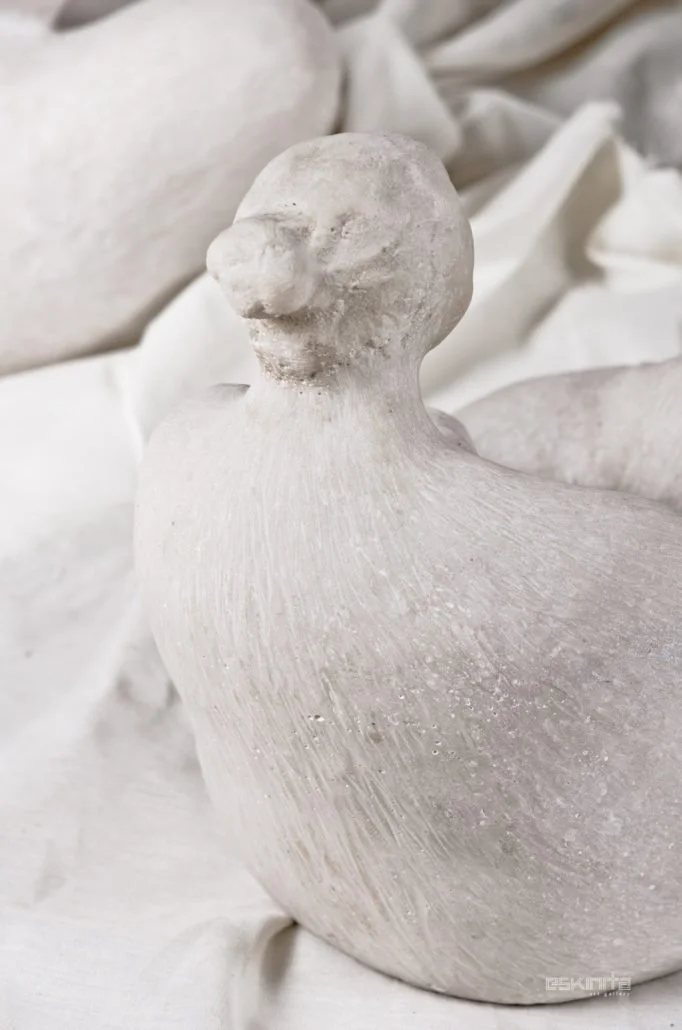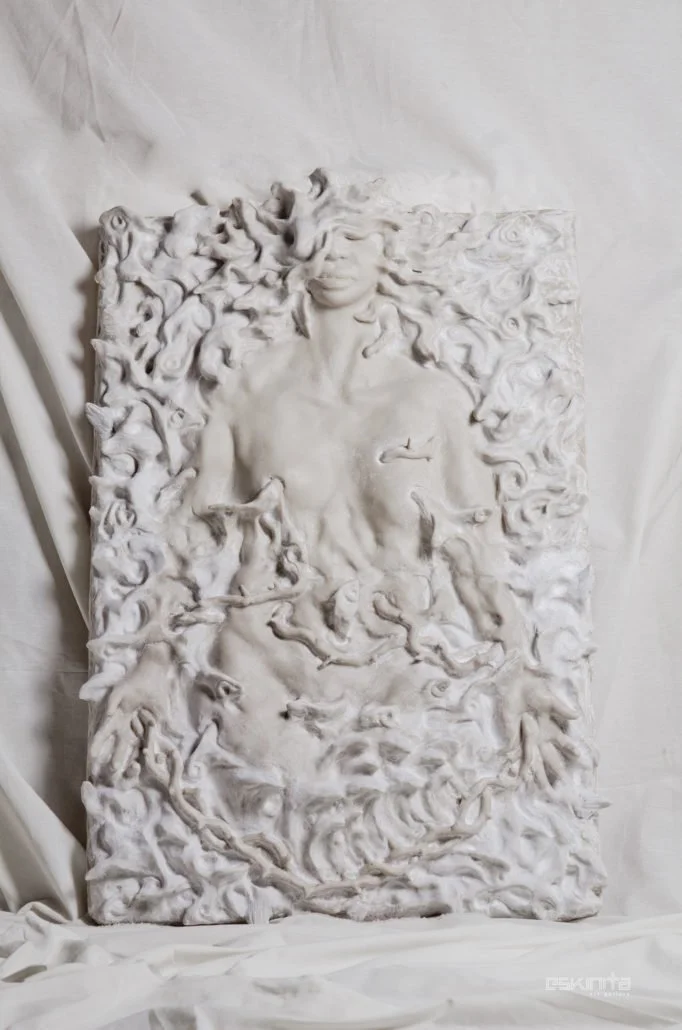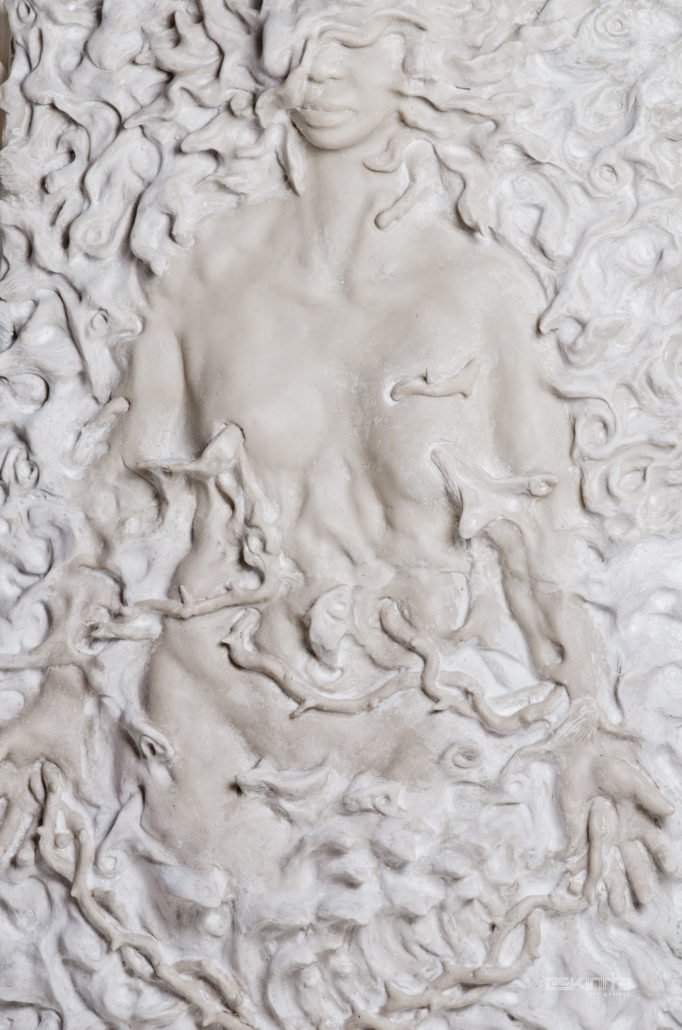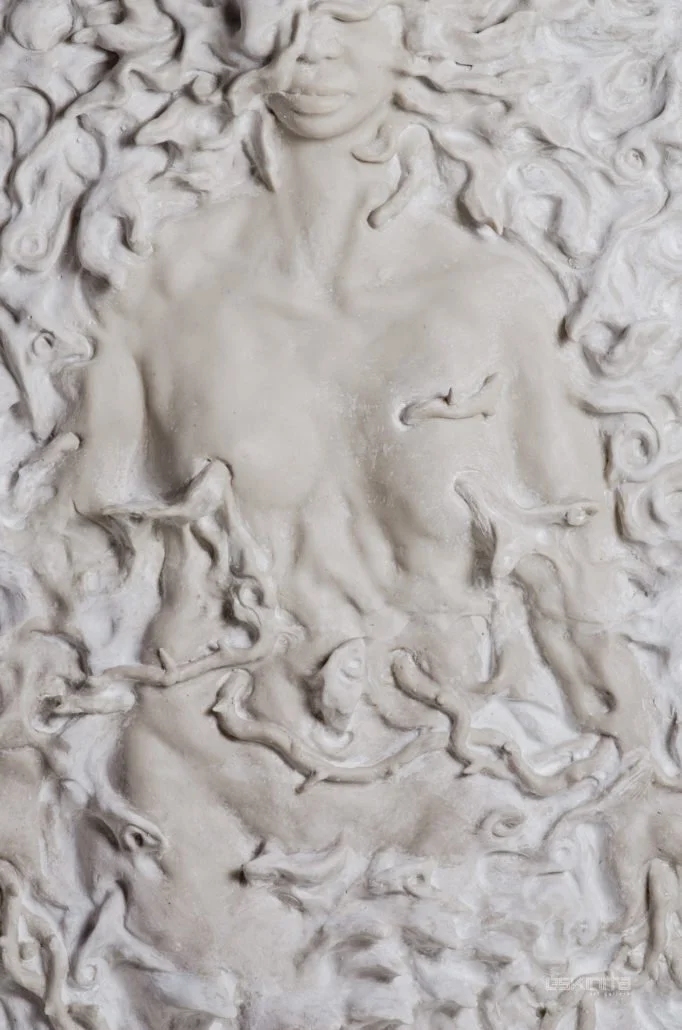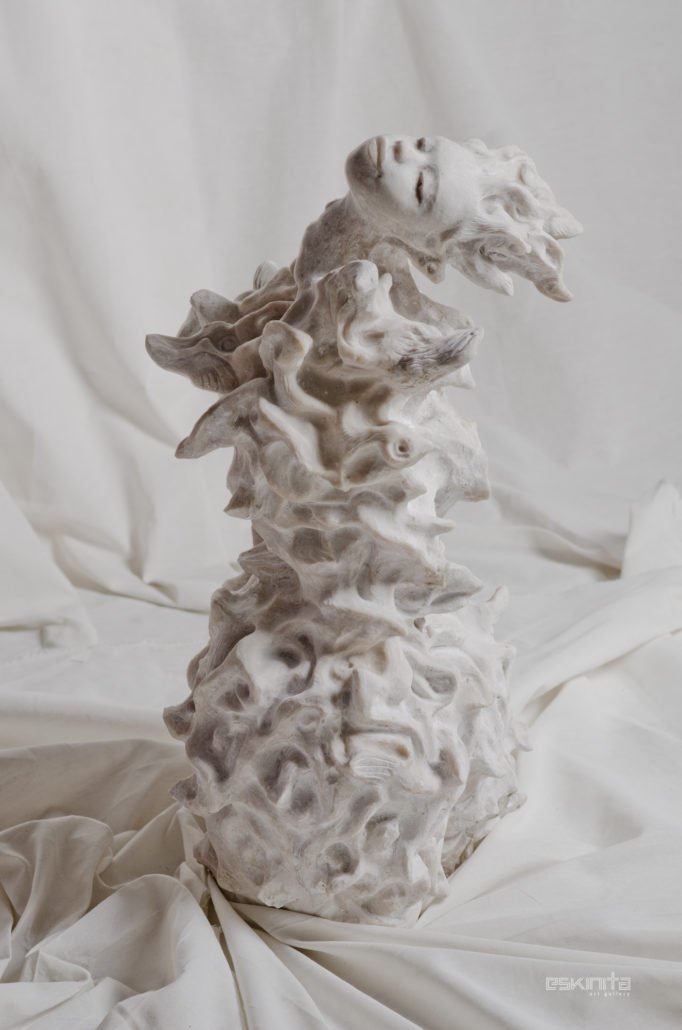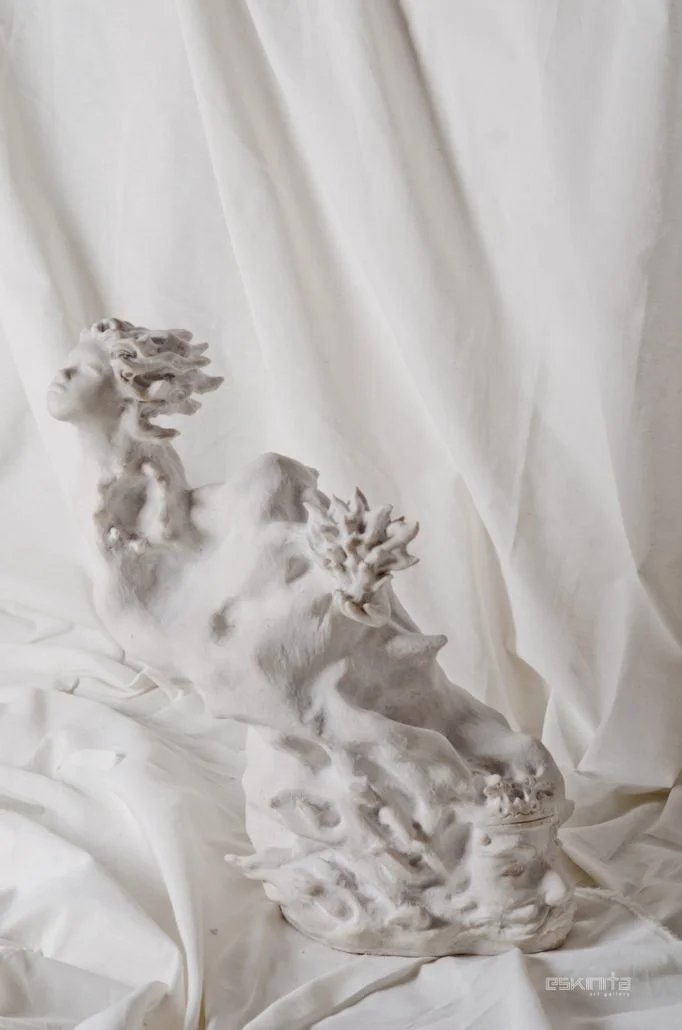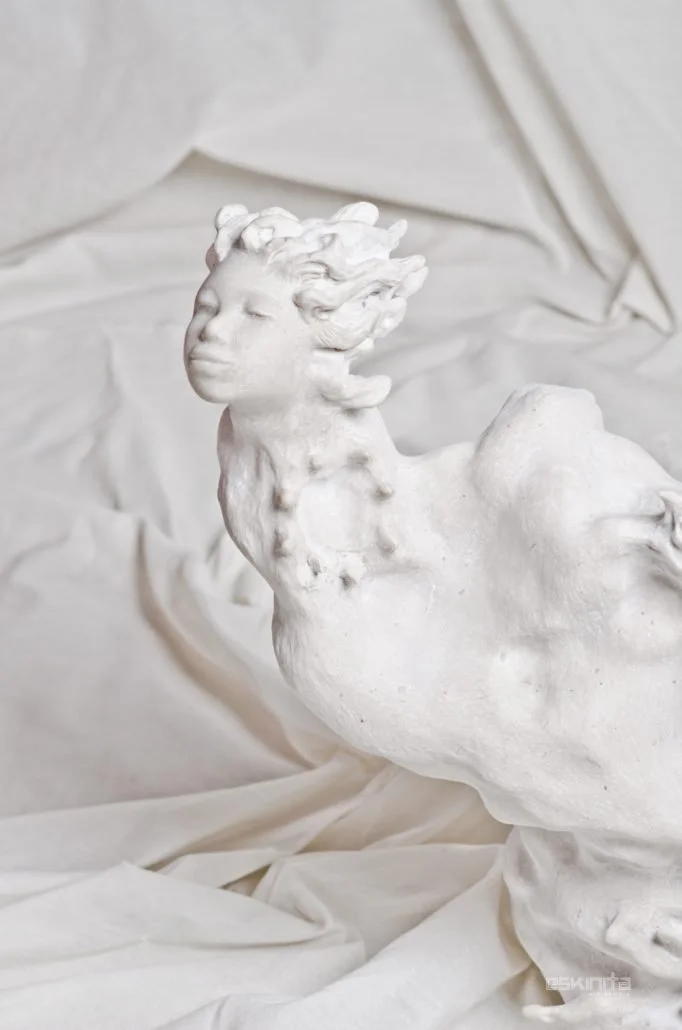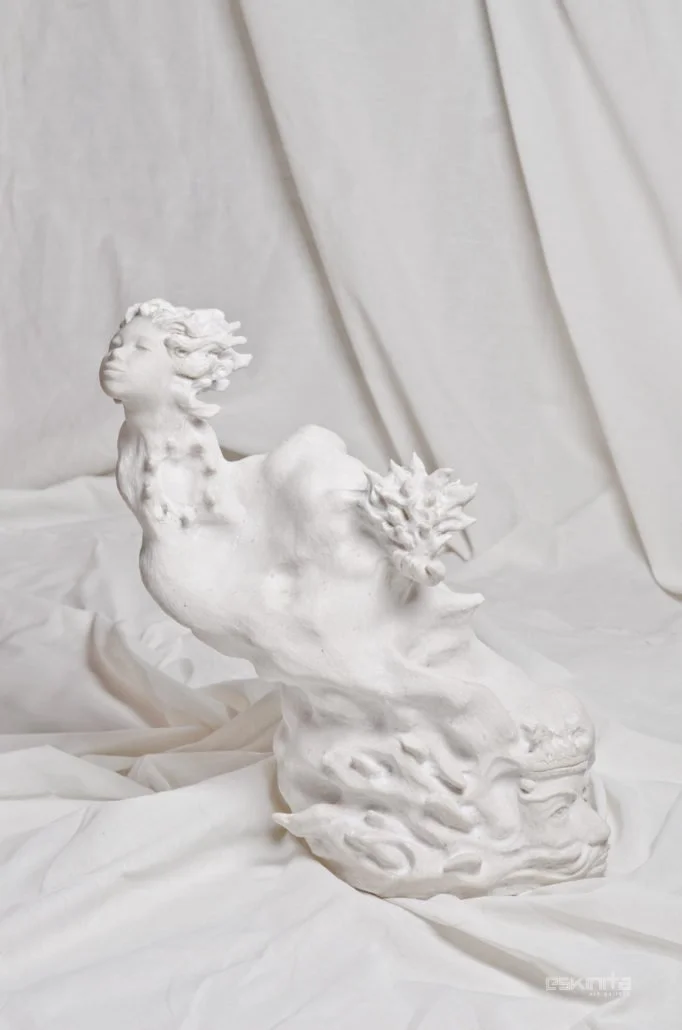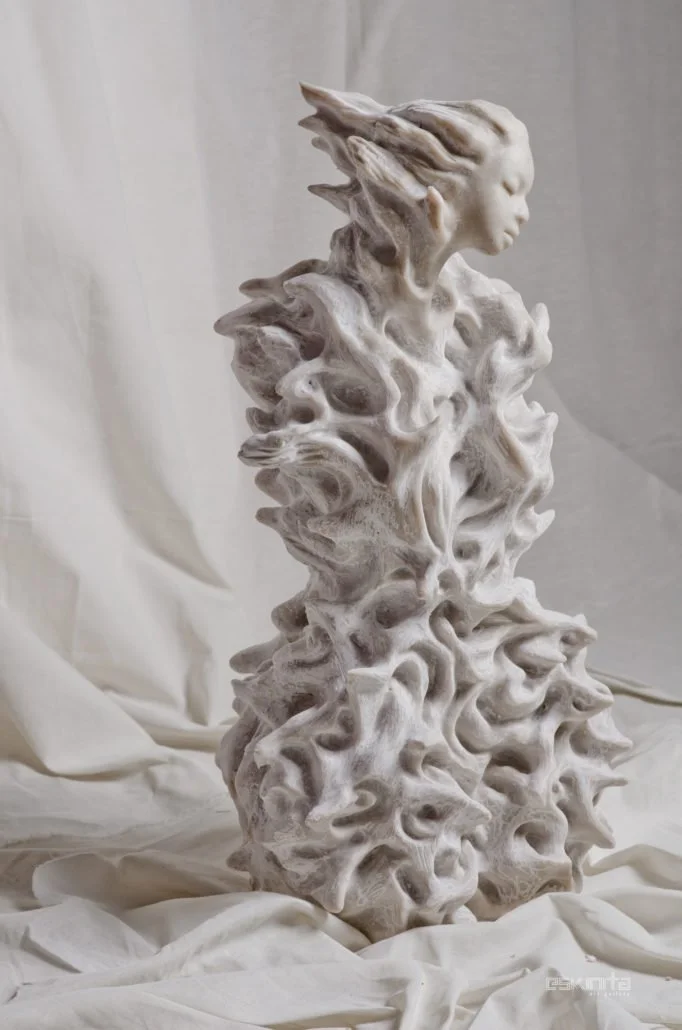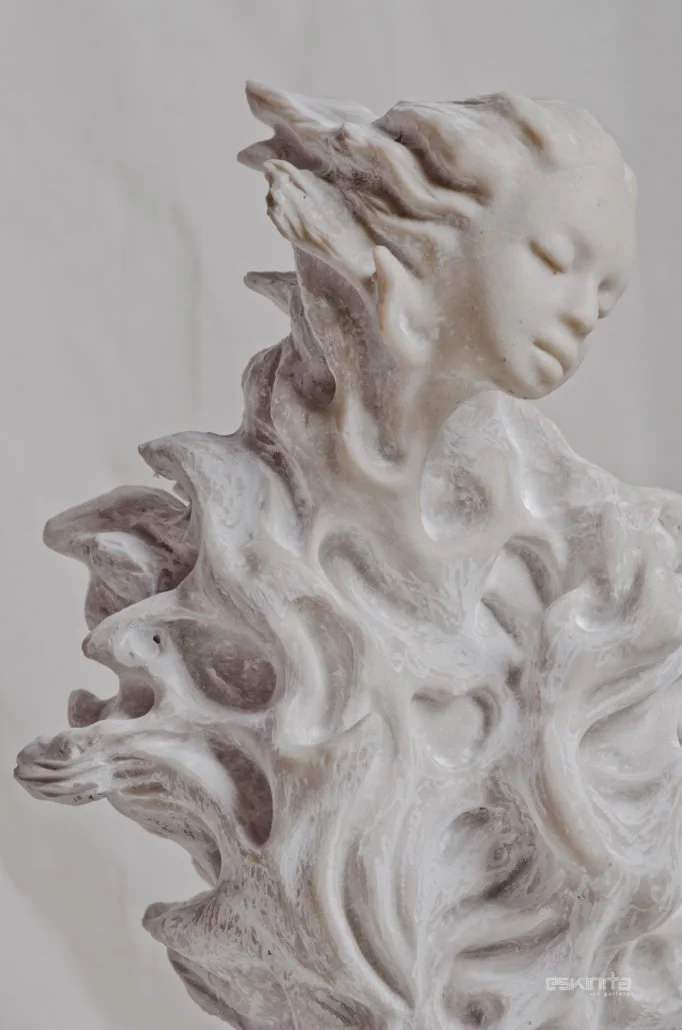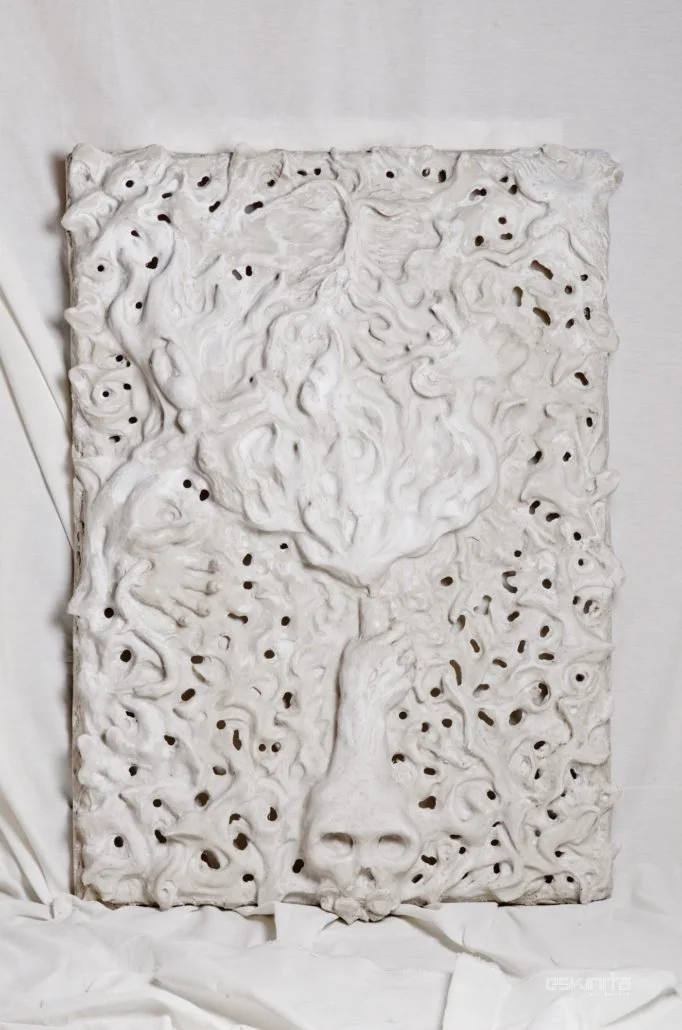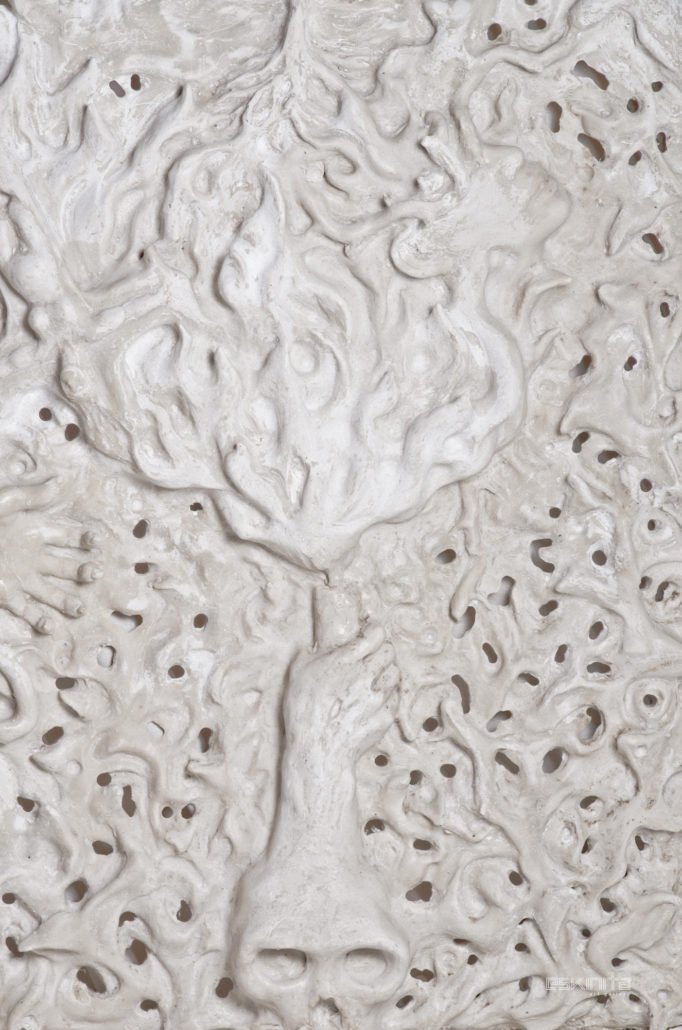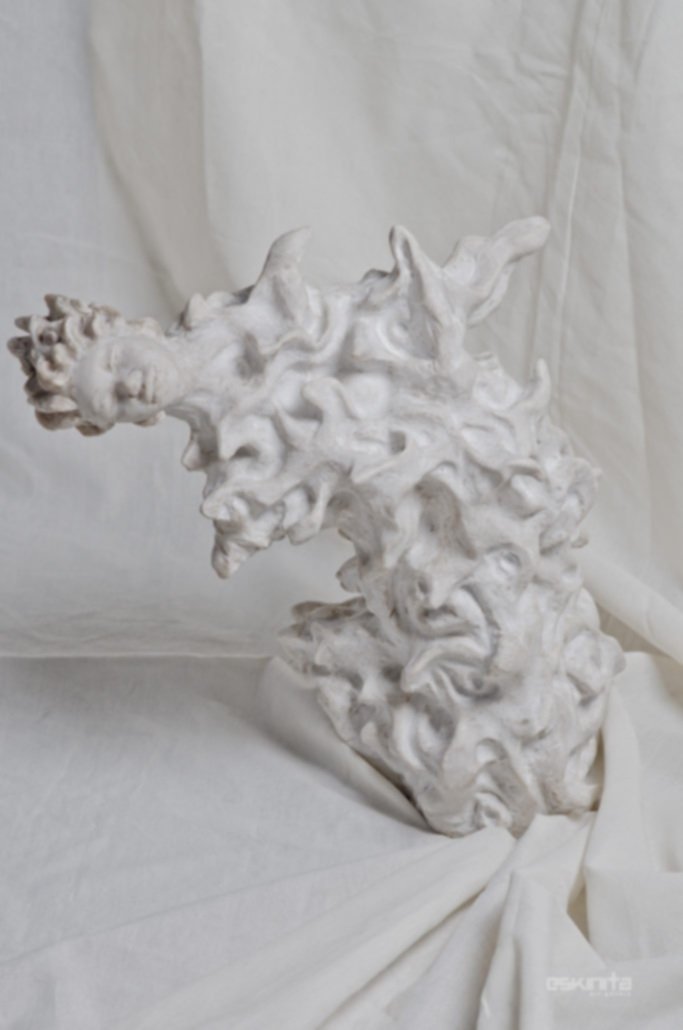
Sea of Meanings
Harry Mark Gonzales
July 17 to August 6, 2018
Artist Mark Harry Gonzales is known for his cold-cast marble sculptures with forms that calls to mind fantastical sea creatures fused with familiar imagery. he often incorporates dynamic biomorphic elements; elongated, wave-like forms that give the impression that his sculptures are organic entities in the process of growth but caught mid-metamorphosis, suspended in a moment between what it was and what it will become. The artist’s fascination with undulating forms sprang up from his contemplations about the sea and its dual nature of nourisher and devourer. At first, he was taken by the serenity of the calm sea but then he also witnessed its capacity for destruction. Gonzales used such motifs in his early works to address topics such as environmental preservation.
For his first solo exhibition titled “Sea of Meaning” however, he elevates the conversation by also exploring the theme of spirituality, of the soul’s journey from suffering to redemption, and of divine salvation.
The artist presents a view of spirituality loosely based in the Judeo-Christian tradition, describing one’s soul as in need of redemption from the sufferings of this world and that divine intervention is needed in attaining spiritual wholeness. The artist invokes this view while at the same time creates his own take by altering traditional renditions. In one piece the artist depicts the trinity with a slight variation, Christ is represented by a woman’s head whose hair is transformed into a fish; this predisposition is also apparent in his usage of other common symbols from Christianity such as the image of thorny vines to depict suffering, an image of a dove representing the Holy Spirit, and the recurring image of a burning bush, from the story of Moses.
Another aspect of Gonzales’ works worth noting in this exhibition is his execution of another staple in his repertoire of images: The female figure. He depicts the female form in two variations, the first is as a torso of a youth, the other is rendered in a form that is reminiscent of prehistoric sculptures we now call “Venus figurines”. The artist integrates the female figure to represent nature, fertility and growth, the curvature of the female body echoing the fluidity of the form of the other elements.
While the artist operates in a clear meta-narrative, as far as each individual piece is concerned, there is no single linear narrative. Rather, like the ebb and flow of the sea that creates foam and surf that briefly appears then quickly dissipates as it merges once again with the waters, the images in Gonzales’s works fuse with one another, not only sharing in their physical form but their meanings intertwine and form a lattice from which the story can be read like in a tapestry. The images seem to bob and sink on the pictorial plane, like the proverbial message in a bottle floating out to sea.
-Ioannis Sicuya

